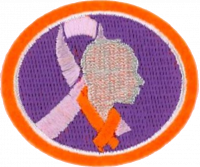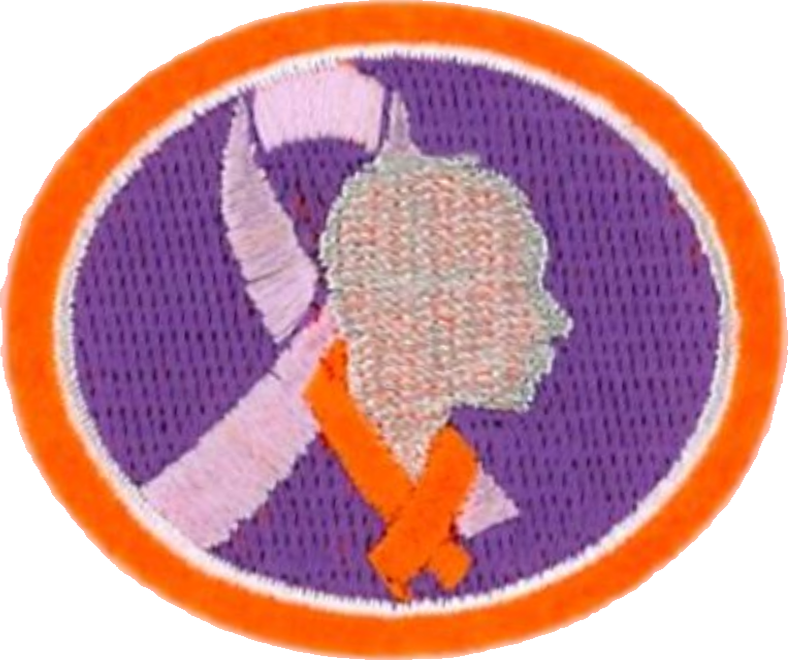Respuestas para la especialidad JA de Conciencia sobre el cáncer
Nivel de destreza
Desconocido
Año
Desconocido
Version
30.12.2025
Autoridad de aprobación
Asociación de Nueva Inglaterra del Sur
1
La división celular es el proceso por el cual una célula madre se divide en dos o más celdas. La división celular está controlada por factores de crecimiento. Hay dos formas de división celular: mitosis y meiosis.
- La mitosis es el proceso por el cual una célula se divide en dos células idénticas. Las nuevas células tienen el mismo número de cromosomas que la célula madre. Este proceso tiene lugar para el crecimiento tisular ordinario.
- La meiosis es el proceso por el cual una célula madre se divide en cuatro células, cada una con la mitad de los cromosomas de la célula madre. Estas son nuestras células sexuales, esperma en machos y óvulos en hembras.
2
Las células cancerosas son mitosis fuera de control. Estas células han mutado o se han «dañado». Comienzan a dividirse duplicando la información que está mal o dañada por la célula. Las células cancerosas se dividen mucho más rápido que las células normales y sin control.
3
El cáncer puede comenzar en cualquier lugar del cuerpo. Comienza cuando las células crecen fuera de control y desplazan a las células normales. Esto dificulta que el cuerpo trabaje como debería.
Todas las células de nuestros cuerpos tienen ciertos trabajos que hacer. Las células normales se dividen de manera ordenada. Mueren cuando están desgastados o dañados, y las nuevas células toman su lugar.
El cáncer es cuando las células comienzan a crecer sin control. Las células cancerosas siguen creciendo y produciendo nuevas células. Ellos desplazan a las células normales. Esto causa problemas en la parte del cuerpo donde comenzó el cáncer.
Las células cancerosas también pueden propagarse a otras partes del cuerpo. Por ejemplo, las células cancerosas en el pulmón pueden viajar a los huesos y crecer allí. Cuando las células cancerosas se propagan, se llama metástasis. Cuando el cáncer de pulmón se propaga a los huesos, todavía se llama cáncer de pulmón. Para los médicos, las células cancerosas en los huesos se parecen a las del pulmón. No se llama cáncer de hueso a menos que se haya originado en los huesos.
Existen muchos tipos de cáncer. No es solo una enfermedad. El cáncer puede comenzar en los pulmones, los senos, el colon o incluso en la sangre. Los cánceres son parecidos en algunos aspectos, pero son diferentes en la forma en que crecen y se propagan. La mayoría de los cánceres forman un bulto llamado tumor o crecimiento. Pero no todos los bultos son cancerosos. Los médicos sacan un trozo del bulto y lo miran para determinar si es cáncer. Los bultos que no son cancerosos se llaman benignos. Los bultos que son cancerosos se llaman malignos.
Hay algunos tipos de cáncer, como la leucemia (cáncer de la sangre), que no forman tumores. Crecen en las células sanguíneas u otras células del cuerpo.
| Cáncer | Tumor | Carcinoma | Sarcoma |
|---|---|---|---|
| Cáncer es un término para enfermedades en las cuales las células anormales se dividen sin control y pueden invadir los tejidos cercanos. Las células cancerosas también pueden propagarse a otras partes del cuerpo a través de los sistemas sanguíneo y linfático. |
Las células tumorales pueden ser benignas (no cancerosas) o malignas (cancerosas). También se conocen como neoplasia. |
Carcinoma es un cáncer que comienza en la piel o en los tejidos que recubren o cubren los órganos internos. | Sarcoma es un cáncer que comienza en los huesos, cartílagos, grasas, músculos, vasos sanguíneos u otro tejido conectivo o de soporte. |
4
5
El cáncer se puede diagnosticar de varias maneras. Cuando una persona tiene síntomas y visita al médico, él / ella puede ordenar ciertas pruebas que pueden determinar si la persona tiene o no cáncer. Se requiere un experto para el diagnóstico y lo hacen recolectando muestras de tejidos y mirándolos bajo el microscopio. Se pueden comparar con las células normales y determinar si la persona tiene o no cáncer.
6
| Niños | Mujeres | Hombres |
|---|---|---|
| Leucemia Cerebro y otros tumores del sistema nervioso central |
Cáncer de mama Cáncer de pulmón |
Cáncer de próstata Cáncer de pulmón |
7
Surgery: Many people with cancer have surgery, especially if the cancer seems to be contained in one area (localized). Surgery may be used to remove it along with any nearby tissue that might contain cancer cells.
Radiation: Like surgery, radiation therapy is used mostly to treat localized cancers – those contained in one area. Radiation destroys cancer cells or damages them so they can’t grow. It can be used alone or along with surgery or chemotherapy. More than half of all people with cancer get radiation at some point. Radiation is given 2 ways: either high-energy rays are aimed from a machine (external radiation) or implants are put into the body near the tumor.
Chemotherapy: Chemotherapy, or chemo, is a treatment with strong drugs that are most often given by mouth or by injection. In most cases, more than one chemo drug is used. Unlike radiation therapy or surgery, chemo drugs can treat cancers that have spread throughout the body because they travel through the bloodstream. It’s given for different reasons, depending on the type of cancer and its stage. Chemo is given in cycles, each followed by a rest period. A cycle might be one dose followed by days or weeks without treatment. The rest period gives the body’s normal cells time to recover. Chemo cycles are set up in other ways, too. Some drugs work best when they’re given a few days in a row, or every other day, followed by a time of rest.
Alternative treatments: We call these “alternative” because they are used instead of proven medical treatments. You may not hear about these treatments from your doctor or cancer team, but others may talk about things like traditional Chinese medicine, acupuncture, or machines that are supposed to find or cure cancer. Some methods take a lot of time and cost a lot of money, such as strict diets or travel to another country for special treatments. Others are fairly cheap and easy to use, like vitamins, herbs, or homeopathic remedies.
Complementary and alternative methods are often appealing because they use your own body, your own mind, or things found in nature. Some even promise wellness using a way that sounds simple, wholesome, and without side effects – something your doctor can’t offer. Another plus is that these are things that you, and only you, choose to do.
Many of these methods almost never cause physical harm, while others can be dangerous and have even caused deaths. But by definition, complementary and alternative methods that claim to cure cancer are nearly all unproven – methods that are well-proven to safely fight cancer tend to be adopted into mainstream medicine fairly quickly. Still, there are methods that have been studied and shown to help a person feel better during cancer treatment.
8
- Smoking as well as being exposed to secondhand smoke on a regular basis has been shown to increase the risk of getting lung cancer.
- Studies showed that physical activity is associated with lower risk of various types of cancer, including breast and colon cancer.
- The association between post-menopausal hormone use and higher risk of breast cancer was uncovered.
- Studies have shown an association between being overweight or obese and 10 different kinds of cancer.
9
Leading a healthy lifestyle goes a long way to help your body fight off diseases. Not using tobacco, alcohol, or drugs, getting adequate exercise and rest, eating a healthy diet with lots of fruits, vegetables, and grains and maintaining a healthy weight makes a difference in reducing your risk of getting cancer.
10
10a
Be not dismayed, for I am your God.
I will strengthen you,
I will uphold you with My righteous right hand.’
Yes, I will help you,
10b
My son, give attention to my words;
Incline your ear to my sayings.
And health to all their flesh.
Do not let them depart from your eyes;
Keep them in the midst of your heart;
For they are life to those who find them,
10c
Confess your trespasses to one another, and pray for one another, that you may be healed. The effective, fervent prayer of a righteous man avails much.
10d
God is our refuge and strength,
A very present help in trouble.
And though the mountains be carried into the midst of the sea;
Therefore we will not fear,
Even though the earth be removed,
10e
He gives power to the weak,
And to those who have no might He increases strength.
They shall walk and not faint.
Even the youths shall faint and be weary,
And the young men shall utterly fall,
But those who wait on the Lord
Shall renew their strength;
They shall mount up with wings like eagles,
They shall run and not be weary,
10f
Wait on the Lord;
Be of good courage,
Wait, I say, on the Lord!
And He shall strengthen your heart;
11
11a
11b
i
ii
iii
iv
11c
11d
References
The patch can be ordered from the Southern New England Conference online store.



